Burma: Towards a new kind of revolution – an awarenessrevolution
A photo report by Nicolas Jouhet
A photo report by Nicolas Jouhet

Ever since 1988, there has been no doubt about the desire for change in Burma.Aung San Suu Kyi and the National League for Democracy are at the forefront ofa movement aiming to transform this totalitarian state into a democracy. Theviolent overthrow of existing institutions is not their chosen route, however:
“Revolution par excellence is an intellectual revolution, which comes from theconviction that it is essential to change mental attitudes and the values thatshape the development of a nation. A revolution that aims only to change officialpolitics and institutions with a view to improving material conditions has littlechance of success.”
Let’s take a look at the background behind the revolution longed for by ASSK.
“Revolution par excellence is an intellectual revolution, which comes from theconviction that it is essential to change mental attitudes and the values thatshape the development of a nation. A revolution that aims only to change officialpolitics and institutions with a view to improving material conditions has littlechance of success.”
Let’s take a look at the background behind the revolution longed for by ASSK.

A population that is essentially rural
There are still very close ties between the Burmese people and they are thereforemore receptive towards a general change in attitude.
There are still very close ties between the Burmese people and they are thereforemore receptive towards a general change in attitude.


The Burmese have a tendency towards the spiritual
We cannot even begin to try tounderstand them without takingthis into account.
We cannot even begin to try tounderstand them without takingthis into account.
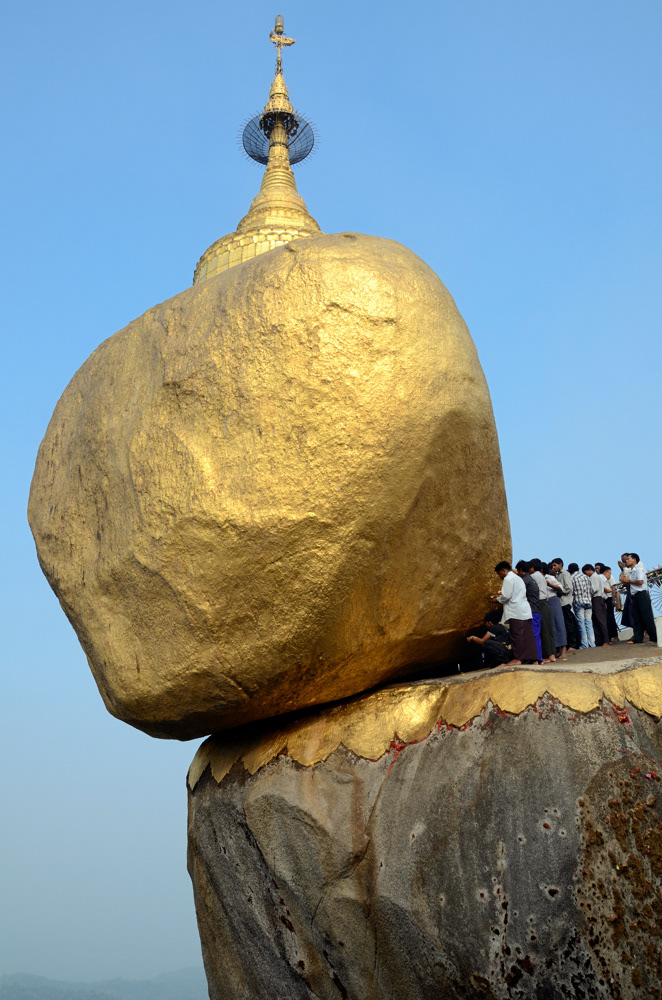
This mysticism is expressed innature in particular, with a rockbeing transported to the sea byangels or a cave becoming acathedral.
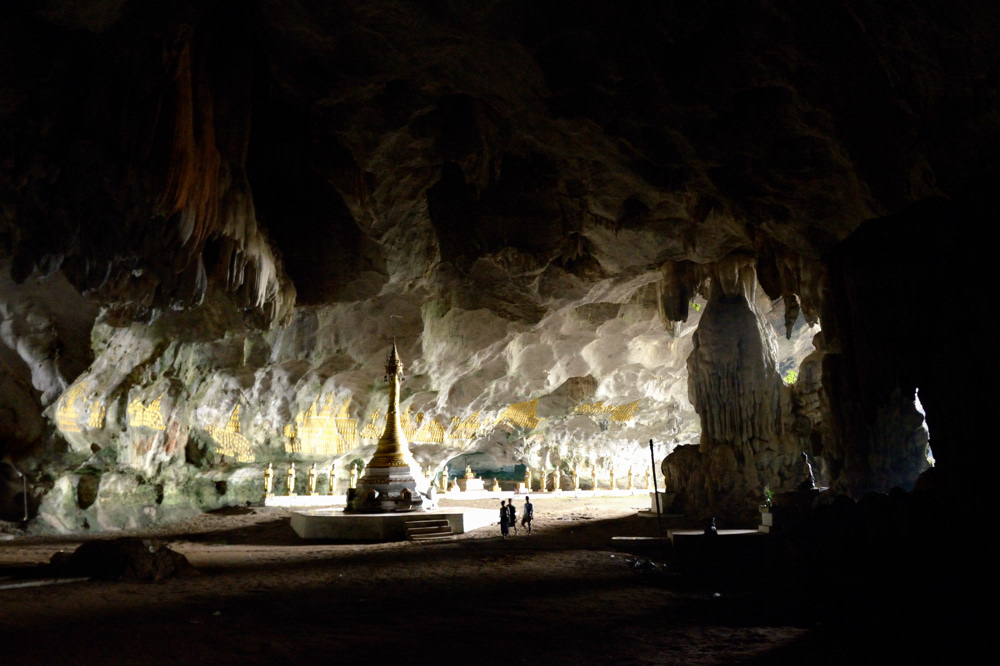
Below is the “kyauk kalap” pagoda, which is like something straight out of afantasy film.

A population with strong links to its Buddhist past
These are some of the 4000 temples at Bagan, most of which were builtbetween the 10th and 13th centuries.
These are some of the 4000 temples at Bagan, most of which were builtbetween the 10th and 13th centuries.

The Burmese have kept intouch with their roots –historic sites are verypopular places ofpilgrimage and 90% of thepopulation is Buddhist.


They are ardent in their Buddhist faith. Below you can see pilgrims on theirway to the Shwedagon Pagoda Festival in Rangoon, which is the most sacredpagoda in the country.

Monks at the heart of Burmese life
The community of monks, which was one of the spearheads of the 1988uprising, plays an important role in the life of the Burmese. The monkslive entirely off donations, like these monks who are returning to theirmonastery after begging for food.
The community of monks, which was one of the spearheads of the 1988uprising, plays an important role in the life of the Burmese. The monkslive entirely off donations, like these monks who are returning to theirmonastery after begging for food.

The monks also provide education for children from poor backgrounds.

The ceremony for the initiation of novicehood is by far the most importantritual in Burma. From the age of 7, young Burmese boys enter themonastery as novices for a period which may last from several days to alifetime.

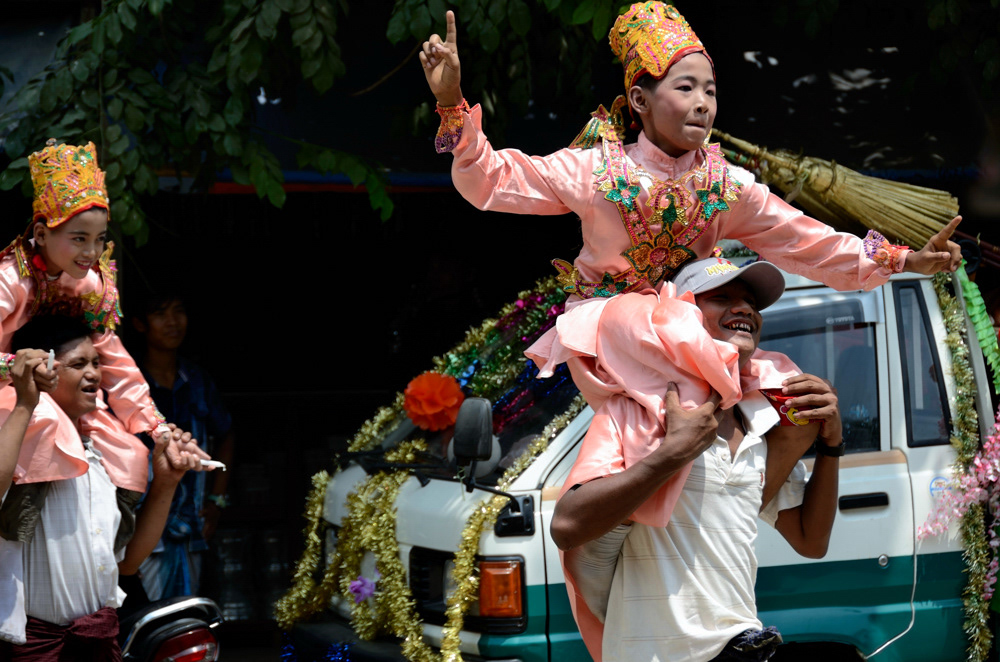

Many young girls also prepare for their novicehood.

A charismatic leader
The hopes of the Burmese for change are embodied by Aung San Suu Kyi.She enjoys widespread support from her people and is recognised at aninternational level, thanks in particular to the Nobel Peace Prize she wasawarded in 1991.
The hopes of the Burmese for change are embodied by Aung San Suu Kyi.She enjoys widespread support from her people and is recognised at aninternational level, thanks in particular to the Nobel Peace Prize she wasawarded in 1991.
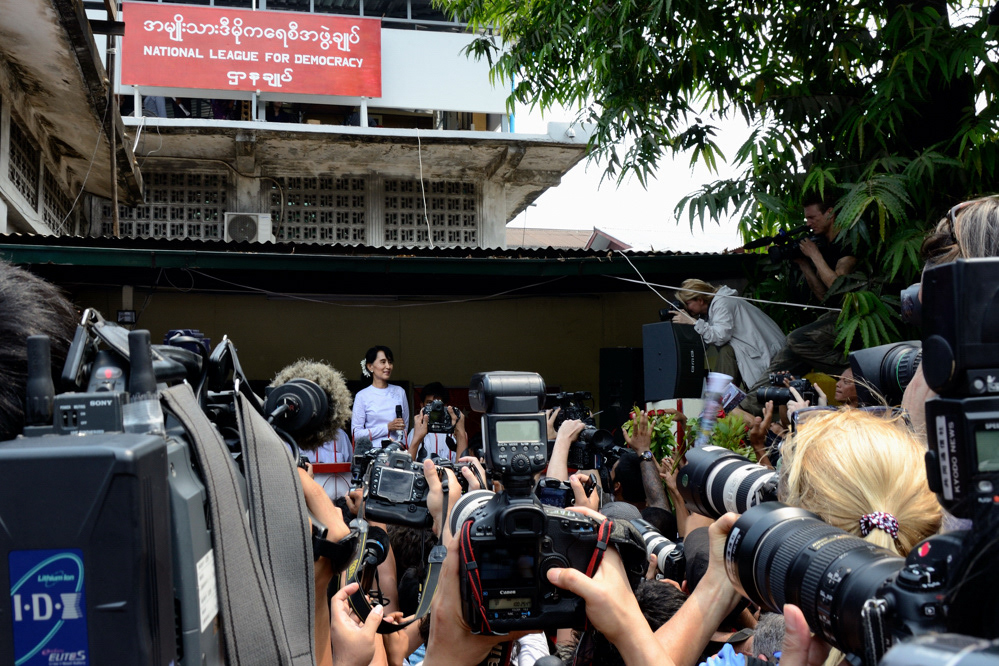
The popularity of ASSK is evidenceof the fact that her philosophy,based on non-violence, rings true inthe hearts of the Burmese people.She undoubtedly has the necessaryspiritual dimension. Her status asthe daughter of General Aung San,who was assassinated by the militaryjunta just as he was trying toestablish democracy for the country,gives her an additional aura. Shecertainly has a legitimate claim forcontinuing her fight for democracy.

In order to achieve her goal, she must succeed in including manydifferent ethnic groups in a democratic Burma, which is able to fulfil theirhopes and needs. This will only be able to happen if the army accepts thatit would be the best solution for the country.

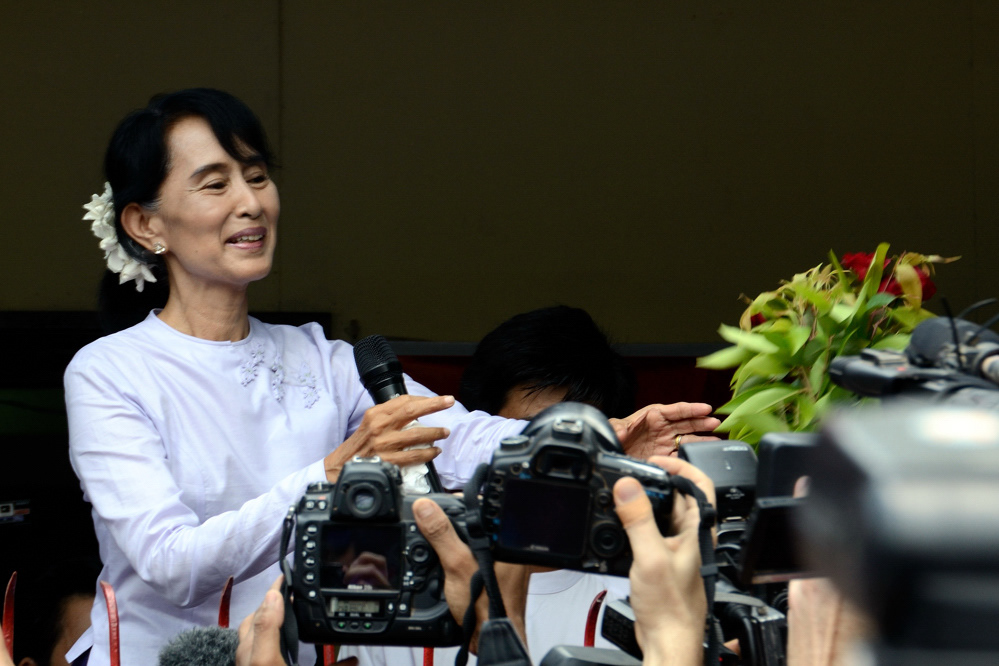
Meditation as a weapon
Many members of the National League for Democracy, including ASSK,get their strength from meditation. Many claim that they have come outfrom periods of imprisonment feeling stronger thanks to meditation.
Many members of the National League for Democracy, including ASSK,get their strength from meditation. Many claim that they have come outfrom periods of imprisonment feeling stronger thanks to meditation.

“You have to develop your inner spiritual force, because those whohave that force don’t feel hatred or hostility because they do notexperience fear.” ASSK

A revolution is underway
It is clear that people in Burma are now less afraid than they havebeen in the past. Followers of ASSK and the NLD have been proud toshow their political opinions since the system showed signs ofopening up. It is possible that the military has also become less afraidof losing power, which would also explain this change.
It is clear that people in Burma are now less afraid than they havebeen in the past. Followers of ASSK and the NLD have been proud toshow their political opinions since the system showed signs ofopening up. It is possible that the military has also become less afraidof losing power, which would also explain this change.
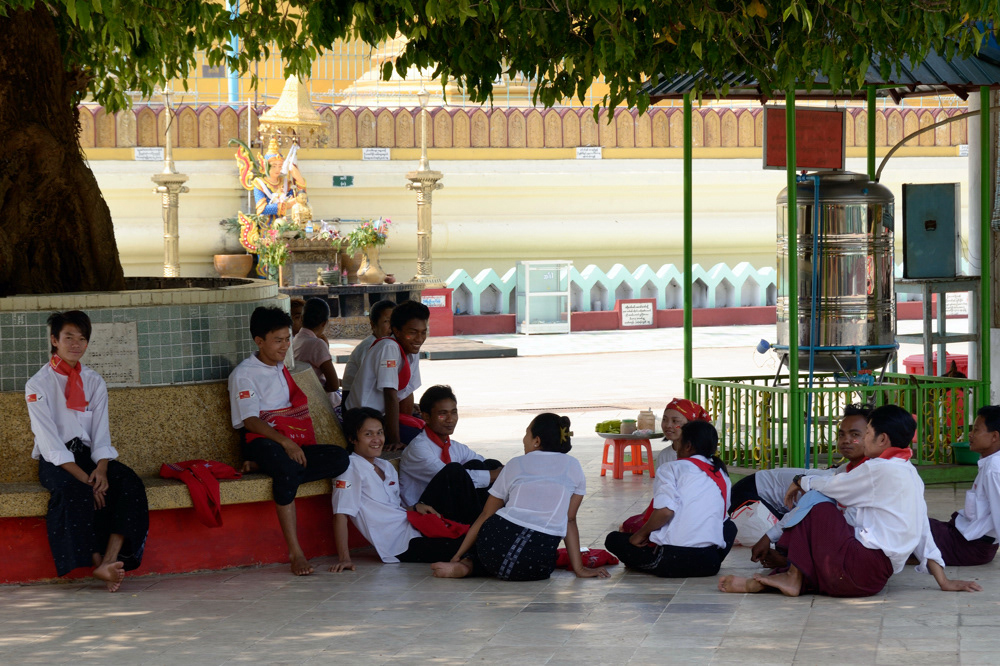

“The non-violence route may well be the slowest, but I thinkthat long-term results will be more stable this way than if wegain victory by violent means. In this respect, patience andperseverance go hand in hand.” (U TIN OO, one of the leadersof the NLD).
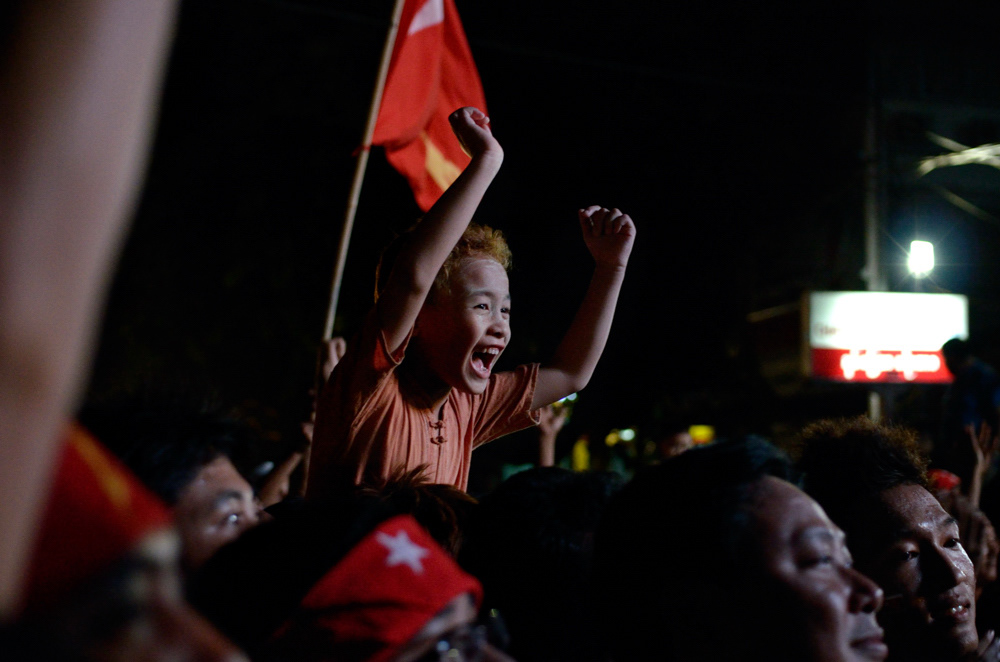
Current changes at a political level reflect a change inawareness. This change relies on an ancient wisdom that theBurmese have never completely forgotten. In fact, ASSK’sspeeches are essentially sourced from Buddhism and the non-violence lauded by Gandhi.

So Burma seems capable of proposing a middle groundbetween the materialistic reasoning behind capitalism and atotalitarian state by reinstalling the wisdom of ancient India.

